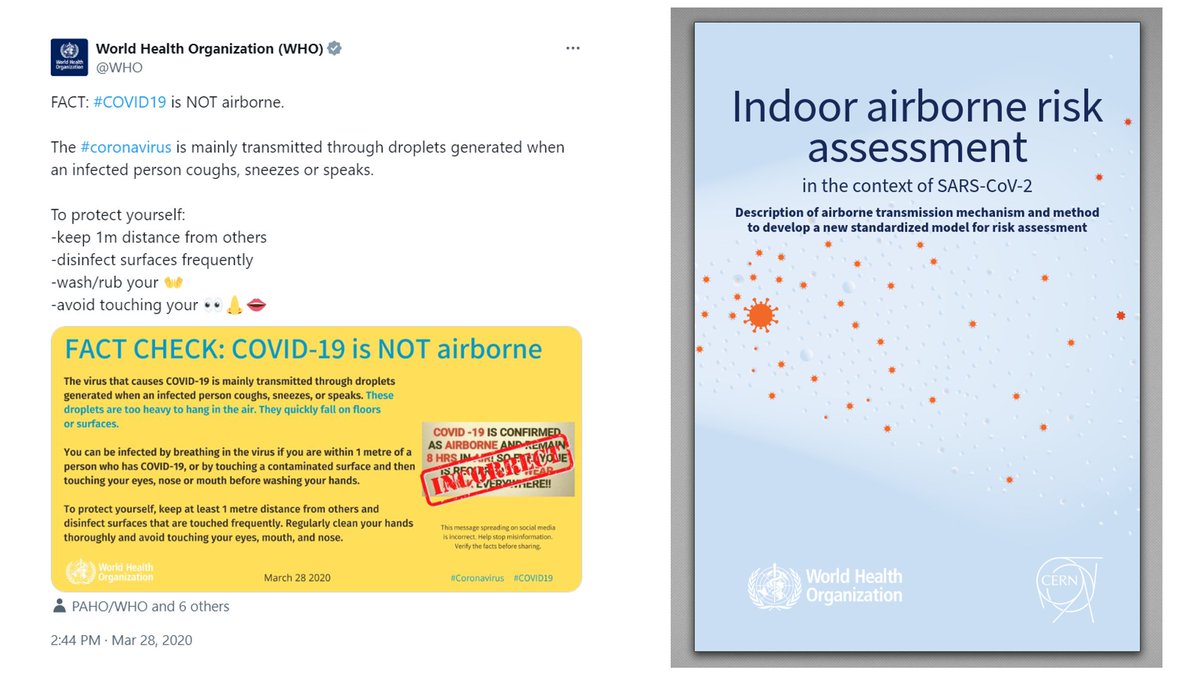Just in! Here's the performance of @JenniferKShea's wedge box with a Utilitech-style fan and two 3M Filtrete 1900 MERV-13 20x20x1 on the back. 🇨🇦 Cost: Fan: $28
Designer adhesive roll: $14
2 Filters: $42
Total: 🇨🇦$84 for estimated 335 CADR (519 sqft room)
Designer adhesive roll: $14
2 Filters: $42
Total: 🇨🇦$84 for estimated 335 CADR (519 sqft room)
https://twitter.com/JenniferKShea/status/1432126890987372545

It performs like Honeywell's largest air purifier, HPA5350BC (🇨🇦$300 sale price/$380 regular). The Honeywell has a greater turndown range but uses more power.
These are updated values for noise and power, measured at the same time as the ones for the DIY wedge: /2
These are updated values for noise and power, measured at the same time as the ones for the DIY wedge: /2

At lower speed settings though the 2-filter wedge design beats the Honeywell in noise, flow, and power due to its large filter area. /3
Tape a shroud on the front. For this fan, the optimal is a 13.5" opening. (this came from earlier flow measurements). For other fans, can use tissue paper to see where the flow changes direction. This front shroud greatly increases flow through the filter. /8 

I've also added an internal shroud of 21cm diameter with tape. This adds about 2% flow and a small noise reduction. Not strictly necessary. /9 

The finished version, sans the decorative adhesive shelf liner. You should also use better tape. The painter's tape I used here was for temporary assembly to test. /10 

Here is the wedge air cleaner on the test rig mounted sideways because of the feet. A flow capture hood is attached to the outlet. Backpressure compensation feature was used for the measurements and multiple points were taken to obtain an average. /11 

See the earlier 1-filter version thread with other details, including frequently asked questions, such as safety. /12
https://twitter.com/DavidElfstrom/status/1429526273009889286?s=20
• • •
Missing some Tweet in this thread? You can try to
force a refresh








![States high levels of CO2 and other contaminants ... can contribute to [list of five health effects, such as headaches, fatigue, difficultly concentrating], says CO2 should be below 1000 ppm, then says (incorrectly) that health effects from CO2 occur at levels above 5000 ppm. No, those effects can occur below 5000 ppm. It also states the CO2 concentrations do not indicate a risk of infectious disease transmission in a space. No, ASHRAE's position statement on CO2 states that elevated CO2 concentrations CAN reflect higher risk. Obviously, because it indicates poor ventilation, which IS an i...](https://pbs.twimg.com/media/GO6z_36WQAI7_mj.jpg)







